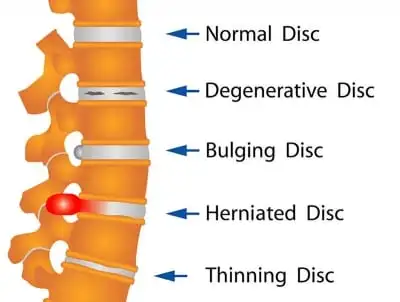Maffucci syndrome
What is Maffucci syndrome?
Maffucci syndrome is a disease that primarily involves the bones and skin. It is represented by multiple enchondromas (benign enlargements of cartilage), bone malformations, and hemangiomas (tangles of abnormal blood vessels). The abnormal growths with Maffucci syndrome may become cancerous (malignant).
Certain, involved people may develop bone cancers known as chondrosarcomas, particularly in the skull. They also have a raised risk of other cancers, like ovarian or liver cancer. The underlying reason for Maffucci syndrome is unknown. No precise genes related to this disease have been recognized.
Causes and risk factors
Maffucci syndrome outcomes from genetic divagations in the genes IDH1 and IDH2.
These genes are liable for creating enzymes required to transform the compound isocitrate into 2-ketoglutarate. The cells in the body use 2-ketoglutarate for expansion and recovery from damage. When an alteration happens in these genes, they create enzymes that do not function accurately.
The gene alteration that induces Maffucci syndrome is not heritable, it is bodily. This represents a change in DNA that happens after conception. Scientists think that the divagation that induces Maffucci syndrome happens during fetal growth.
Although experimenters know these gene alterations are present in people with Maffucci syndrome, they accomplish not completely understand the connection between these divagations and the signs and symptoms of the syndrome. Some proof indicates that variations in different genes may also generate some points of Maffucci syndrome.
What are the symptoms of Maffucci syndrome?
The signs and symptoms of Maffucci syndrome can differ, varying from mild to severe. They may be current at birth, but they generally evolve during childhood.
The main symptoms of the disease arrived from enchondromas, which can guide to:
- Bone pain.
- Bone fractures.
- Bowed arms or legs.
- Bulging bones.
- Curved spine (scoliosis or Kyphosis).
- Destruction of bone (osteolysis).
- Short stature (height).
- Uneven legs or arms (one longer than the another).
Symptoms related to hemangiomas may contain:
- Blood clots.
- Lymphangiomas are fluid-filled cysts in the vessels that convey lymph throughout your body.
- Red, purple or blue skin growths (hemangiomas), frequently on your hands, may harden and get bumpy over time.
- Underdeveloped muscles.
Diagnosis
A healthcare provider or doctor can diagnose Maffucci syndrome with:
Physical examination to examine for visual signs of the condition and examine the record of symptoms.
X-rays or CT studies to take photos of your bones.
Surgery to extract parts of bone or tissue, which a professional will study under a microscope.
Treatment options
There’s no treatment for Maffucci syndrome. The purposes of therapy are to:
Catch cancer early for more useful therapy.
Control or manage broken bones.
Reduce symptoms such as pain.
Your healthcare team or doctor will order routine medical imaging to scan your bones. If enchondromas or skeletal problems impact function, therapies may contain:
Braces or surgeries to fix scoliosis (abnormally curved spine).
Casts, splints, and operations to repair broken bones.
Shoe lifts, drugs, or surgery to decrease differences in leg length.
Surgery to correct hand abnormalities.
Surgical subtraction of enchondromas.
If hemangiomas are bothersome, a healthcare provider or doctor may suggest sclerotherapy. The method uses an injectable answer to shrink the lesions. Hemangiomas also can be extracted surgically.
Prognosis
Patient with Maffucci syndrome commonly has a specific lifespan. The longevity of those who create Maffucci-related malignancies or second cancers relies on the particulars of their clinical situation.
The disease may cause variable degrees of physical impairment relying on the size of any skeletal abnormalities the person has. In general, Maffucci syndrome should not cause a patient to experience any extreme limits.
The National Organization for Rare Diseases declares that patients with Maffucci syndrome should regularly follow meetings with healthcare professionals or doctors to inspect for the growth of any cancerous tumors.
FAQ
What’s the outlook for people with Maffucci syndrome?
Maffucci syndrome is a chronic, lifelong disease. Some patients with Maffucci syndrome have minor physical problems and very rare restrictions on movements. But others have severe issues with more extreme bone issues and physical restrictions. The disease doesn’t involve intelligence. It can potentially shrink your lifespan if you invent cancer.
How do I bring consideration of myself with Maffucci syndrome?
Patients with Maffucci syndrome have a higher possibility of developing cancer. You should follow your healthcare team or doctor’s suggestions for screening. The earlier you notice cancer, the more useful therapy can be.
What’s the difference between Ollier’s and Maffucci’s syndrome?
Both Ollier syndrome and Maffucci syndrome are kinds of enchondroma. But Maffucci syndrome also includes hemangiomas.
How is Maffucci syndrome diagnosed?
The diagnosis of Maffucci syndrome is caused by a precise record, thorough physical examination, and radiologic examination. Surgical subtraction and microscopic examination of the skeletal lesions verify the presence of enchondroma and determine the tumor from chondrosarcoma.
Who discovered Maffucci syndrome?
In 1941, Carleton et al offered the eponym Maffucci syndrome. Maffucci syndrome is a periodic mosaic genetic disease that involves both men and women. It is associated with heterozygous bodily transformations in the isocitrate dehydrogenase 1 and 2 (IDH1/IDH2) genes.








One Comment